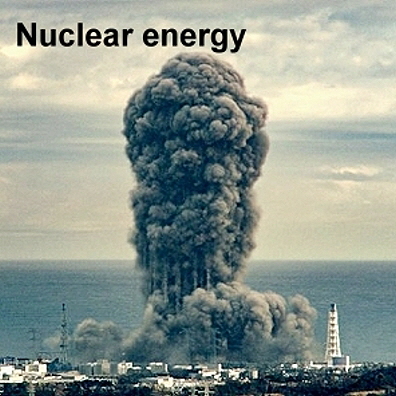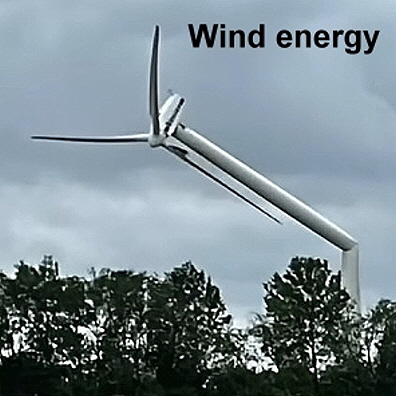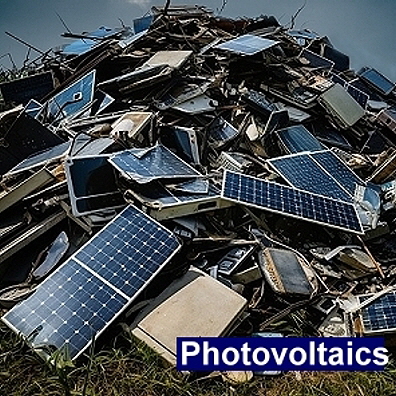

Index Home Desert-Electricity World Deserts Electric Network Types of Produktion Comparison Water Network Hydrogen New Industry Green Cities Energy Transition Imprint
Nuclear Fusion
Conclusion: Why recreate the sun, what should be the point?
We already have a sun, we just need to capture and use its energy, we are not dependent on building a new sun on earth.
The construction of nuclear fusion reactors and, above all, the necessary surrounding technologies is extremely expensive, complex and complicated; the costs cannot be realized by natural companies without state aid. The operating times of these reactors are relatively short and in the end what remains is a gigantic pile of scrap that is partially contaminated with radiation. The reuse of the material is practically only possible through decontamination measures, melting down and new production. The construction and demolition or recycling of such systems release enormous amounts of CO2 given the current energy mix. A real breakthrough has not yet been achieved, so far everything only works in the laboratory. Building actually functioning reactors will take at least another 35 - 75 years. We would then need thousands of these hyper-expensive giant machines in inhabited areas, for which we would still not have enough green energy and this expansion would put an extreme strain on the environment.
Generating energy via thermosolar power plants is easier, immediately available here and now, cheaper and the running times are not only extremely much longer but due to the simple maintenance and 90% recycling, they are practically infinite. The simple technology can be constructed with relatively low CO2 emissions.
It is completely unreasonable, even stupid and wasteful, to invest working people's money in technologies that are not actually needed and that produce much less performance and CO2 savings than solar power plants.
Research is important, but not just to support technology companies in their exponential growth plans, for a possible far away success, with which they would significantly heat the earth even further.
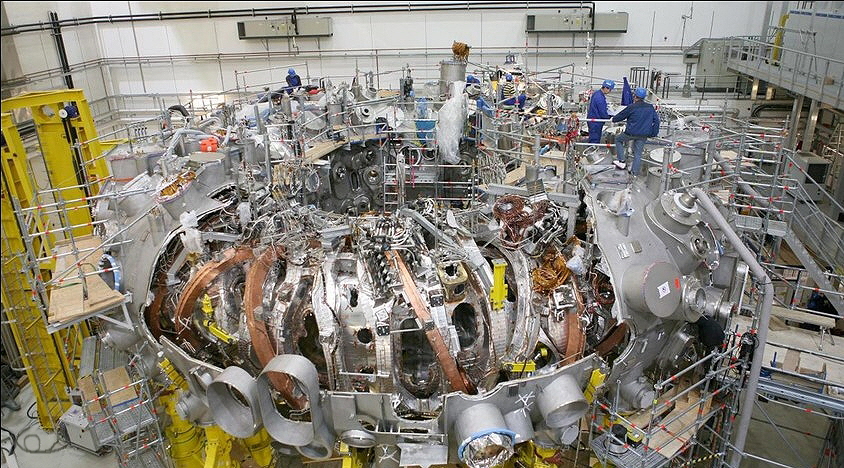
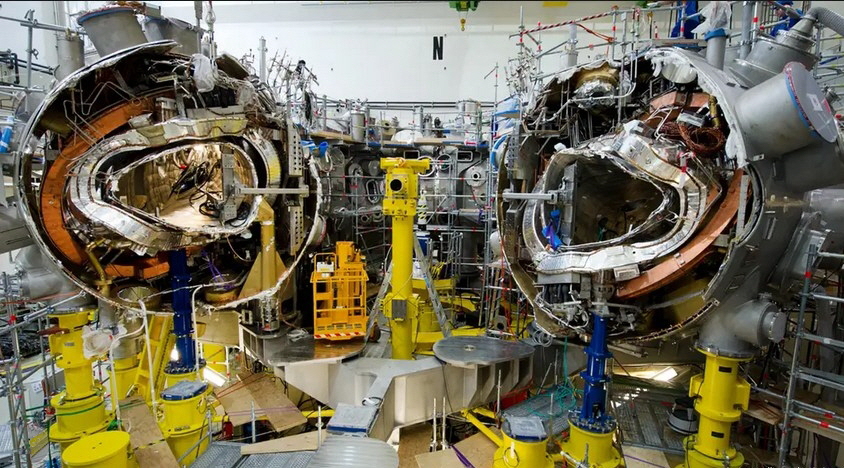
The Wendelstein 7-X in Greifswald was presented as a breakthrough, but even this jumble of technology does not achieve real performance.
When I was a child I was told about nuclear fusion, I was told it would replace nuclear energy in 30 years. Then I was 35 years old and people are telling me that it will soon be that time, only 30 years and we will have endless energy through nuclear fusion... now I am 63 years old and now they actually want to tell me again in 30 years it's finally here. But I think they will still tell me that when I'm 90 years old.
Nuclear fusion in detail
The sun shows us how it works, every day, constantly fusing hydrogen atoms into helium and thus supplying energy to practically all life on earth.
Rare hydrogen isotopes are needed to operate future nuclear fusion reactors. They are made from the battery raw material lithium or from seawater.
The latest experiment in a US laboratory, in which for the first time more fusion energy was generated than was needed to start the reaction, raised hopes that the end of the energy problems could be near. A huge laser fused hydrogen into helium in such a way that more energy came out than the laser energy put into it. A world premiere for nuclear fusion.
Missing neutrons
Unfortunately, the nucleus of a hydrogen atom only consists of a single proton. However, in addition to two protons, helium also has two neutrons in its nucleus. The process of creating helium from hydrogen consists of several steps that include the conversion of protons to neutrons.
Deuterium or “heavy hydrogen” is a natural isotope of hydrogen. Its nucleus consists of a proton and a neutron. Naturally occurring hydrogen contains a deuterium content of around 0.015 percent. Water with deuterium instead of the original hydrogen is called heavy water. It can be obtained from seawater using centrifuges.
Tritium or “superheavy hydrogen” is an isotope of hydrogen. Its atomic nucleus consists of one proton and two neutrons. Tritium is the heaviest and the only radioactive variant of hydrogen; it has a half-life of 12.3 years. To produce tritium, a nuclear reaction is required. The raw material for this is, of all things, the metal lithium. If you irradiate it with neutrons, the valuable tritium is created in addition to helium. However, this is very unsatisfactory; it would be expensive, cumbersome, and would require nuclear material and appropriately protected facilities that would produce nuclear waste. Fortunately, neutron radiation is also produced in fusion reactors to produce tritium from lithium. The idea is currently being pursued to line the interiors of fusion reactors with plates made of lithium. Currently, carbon in the form of graphite is often used for this purpose, but this is removed and contaminates the fusion gas. Cooled boxes with lithium-containing material are being considered for the future, which will allow the resulting tritium to be sucked out. However, the neutron radiation is not strong enough to produce enough tritium in practice. So you also need a material like beryllium, which can increase the neutron radiation. Whether this will work as expected is still up in the air.
Furthermore, the fusing of deuterium and tritium is the most favorable for fusion technology. This produces an excess neutron, which escapes from the system as radiation.
The correct lithium isotope
The fact that irradiating lithium automatically produces tritium is not entirely correct. Strictly speaking, this requires a specific lithium isotope, namely 6Li. Fortunately, lithium occurs naturally as a mixture of isotopes 6 and 7, with 6Li making up just over seven percent. In fact, 7Li can also be converted into tritium. A fact that occurred during the first US hydrogen bomb tests on the Bikini Atoll where this effect was not taken into account and so the explosion of the Bravo bomb was two and a half times as violent as predicted.
However, this tritium production process is not suitable for fusion reactors. The proportion of 6Li would therefore have to be increased to a double-digit percentage, which represents a technical challenge that is currently still being researched.
The world's largest experimental nuclear reactor, Iter, currently being built in southern France, is designed to achieve a gain factor of ten. It is not scheduled to go into operation until 2035 at the earliest. But Iter will not generate any energy.
Unrivaled energy density
Fusion produces large amounts of energy from small amounts of fuel, which gave rise to the rumor of endless energy availability. One gram of a deuterium-tritium mixture is said to enable an energy yield in fusion reactors equivalent to burning twelve tons of coal. A 1 gigawatt power plant consumes over 2,200 tons of coal per day. The requirement for a deuterium-tritium mixture for a nuclear fusion power plant would therefore be 183 grams per day. With the ~5,000 power plants that were mathematically required, we would need to use around a ton of the deuterium-tritium mixture every day.
Even if nothing in the world is infinite, the availability of fusion fuel is not the biggest hurdle for generating energy from nuclear fusion, provided that tritium can be produced from lithium in fusion reactors. The real obstacles lie elsewhere.
The extremely high investment costs
We could not expect the first functioning demo reactors until 2060 at the earliest. But these wouldn't produce anything at first, they would just look good.
If the demo reactors prove successful, it is estimated that a few first-generation reactors could follow around 20 years later, which would be built by private hands with the aim of generating energy. The subsequent second-generation reactors would be cheaper and more efficient, but would then have to be built in thousands of copies, which would cost a lot of money.
The scientist Professor Niek Cardozo and his team assumed in 2016 that around two to four trillion US dollars in investments would be necessary just to develop this type of fusion energy. This is very dangerous for these companies because they would have to pay the high construction costs, including interest, for this technology before they can be proven on a large scale.
Thousands of reactors required
A lot of time could pass between reactor generations, during which there are no or hardly any learning effects. For example, a construction period of at least ten years is assumed, which is how long it takes today to put a traditional power plant into operation. There will therefore also be logistical limits during construction. In order to generate a third of electrical energy from fusion in 2100, we would have to build 250 reactors a year from 2080 onwards, writes Professor Niek Lopes Cardozo in a scientific article. A single fusion reactor with one gigawatt of output would cost around 10 to 20 billion euros today and take around 10-20 years.
For comparison: the construction of the Noor solar power plant only took three years and provided energy immediately. Two such power plants can produce 1.2 gigawatts and then only cost around 4.5 billion euros.
Infinite energy?
Fusion reactors do not provide “infinite energy,” as is often proclaimed. The output of a fusion power plant will probably be around one gigawatt. One gigawatt is what would make economic sense. Smaller, modular reactors would only be profitable if there were major advances in neighboring disciplines, such as research into high-temperature superconductors, which are needed for magnets in the tokamak reactor.
Enough fuel is available
The fusion reactors would require deuterium and tritium as fuel. The two hydrogen isotopes are sufficiently present on Earth. Deuterium occurs in seawater and can be extracted from it using centrifuges. Tritium, in turn, could be generated from lithium in the reactor itself.
Radiation not a big problem
There is less need to worry about hazardous waste in nuclear fusion power plants. Instead of nuclear waste radiating over tens of thousands of years, only harmless helium is produced. Only certain parts of the building, such as the inside of the combustion chamber, would become radioactive. However, this radiation would subside after just a few decades.
Research is currently underway into materials that absorb less radiation. The Iter experimental reactor uses a special steel that is supposed to emit relatively little radiation after just 50 years, and the radiation could be below official limits after just one hundred to two hundred years.
Real economic use is still a long way off
The constantly mentioned 30 years until usable fusion energy is still far from being in sight. The physicist Georg Harrer believes it is realistic that fusion reactors will provide as much energy by 2100 as nuclear power plants do today, i.e. around ten percent of the electricity requirement, but the majority of serious researchers expect it to be more like another 100 years. It is expected that up to 200 years will pass before it can be used in an economically viable manner. There are simply still too many unknowns.
The new laser technology
Fusion requires large and complex machines. They are expensive, they take years to build and so it took a long time for laser fusion to build a machine that was large and powerful enough to demonstrate fusion. National Ignition Facility, that's what it's called, or NIF for short. The most powerful laser in the world, costings around four billion dollars and the size of a football stadium. In spring 2007 the NIF is almost finished. The laser flashes are extremely powerful, in the terawatt range, but for a very short time. The 192 flashes of light fire from all sides at a capsule containing an approximately 1.6 millimeter ball made of deuterium and tritium. The laser beams are intended to compress and heat the material so much that it ignites. However, it took until December 5, 2022 for this to happen for the first time.
The only thing that has been known for sure since 2022 is that it is fundamentally possible to generate energy in this way; this had not yet been clearly proven before.
The way to the reactor is still long here too.
The initial euphoria was great, but NIF's lasers can only target one fuel pellet per day. The German-American company Focused Energy wants to do this ten times per second. Each sphere should be shoten not just once, but twice, with two successive volleys of light. The first is intended to compress the deuterium-tritium spheres to less than a hundredth of their volume. Then the second volley should ignite the fuel. However, the spheres are complex structures and look like a truncated pyramid. A reactor would have to consume almost a million fuel pellets per day. Gigantic reactors would have to be built in partly residential areas, with huge lasers. The mass production of millions upon millions of fuel pellets has yet to be developed. You would also need a nuclear facility to produce tritium, which would then also produce nuclear waste. Dealing with the fuel pellets will probably be anything but easy. If a target in a chamber is fired at ten times per second, while a tenth of a second previously a thermonuclear explosion had just taken place in this chamber, that is a certain challenge. Lasers that fire ultra-powerful flashes of light ten times per second also have yet to be developed. The dissipation and use of the resulting heat energy is also still completely unclear. Materials that can withstand a million-degree hot plasma in the long term, dissipate it and transmit it without loss still have to be developed. The costs of developing these reactors and ancillary production are gigantic, it is expected to be up to 10 trillion dollars and further gigatons CO2 produced.
Climate goals and use
Ultimately, we would have to build all of these power plants and production facilities possible CO2-free if we want to meet any degree targets, for which we would essentially need sufficient green energy during development.
Because these fusion reactors will initially produce heat and not electrical energy, they could only be used directly in a very distant future.
Initially, they could be used to desalinate seawater, for district heating, for hydrogen production or even as a drive for the planned useless Mars mission. In my opinion, this also belongs in the realm of science fiction fantasies a la Starwars. One want to generate raw materials there and transport them to the earth. But how? Nuclear fusion or not, continue with modernized Chinese fireworks rockets? And for what? We have everything we need to live here on earth and in sufficient quantities. We just have to finally develop the recycling, that is, the reverse engineering of raw materials bound in products, before we lose ourselves in dreams about interplanetary travel. Which we cannot manage anyway without this important development stage of understanding our own periodic table and handling it in production for the purpose of reverse engineering. We would just get lost in an endless waste loop that would stretch across the earth, the oceans and out into space, and there would be a great risk that we would contaminate the earth even more with the material brought in than with the material artificially produced wich we are produce here. Furthermore, we should finally move away from the endless developments of thrust systems and look for a drive that really meets the requirements of space travel. For example, we should create artificial gravity, via compressed mass rotating at ultra-high speed, with which we can bend space.
The stop of global warming
Given the current state of development, we must achieve the current climate goals without nuclear fusion one way or another. But even in 100 to 200 years it won't hurt to have another clean energy source available. That's why we should definitely continue to pursue the possibility of nuclear fusion. However, this research should be financed through donations and the costs should not be imposed on the general public, who will not derive any visible benefit from this development. We should be clear that the development of nuclear fusion reactors only brings real advantages just to the relevant technology companies. They are extremely expensive and the lifespan is limited to a maximum of 20-30 years due to the extensive use of complicated and therefore vulnerable technology. Burn-material is necessary, which also has to be produced using complex mechanisms. Overall, this means a lot of profit opportunities for technology companies. However, there is hardly an application that we could not serve differently, much more cheaply and more effectively.
Because of the individuality of states, one should not accept additional contamination of the atmosphere, which, as we know, is used by everyone.
The size is fundamental
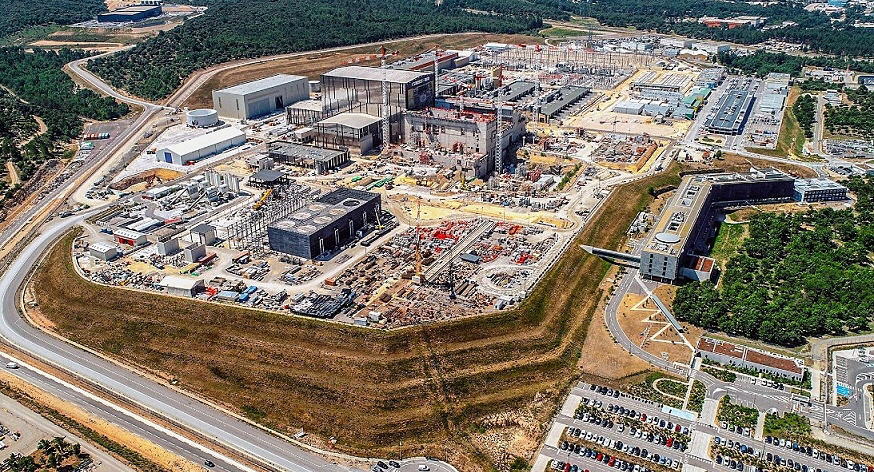
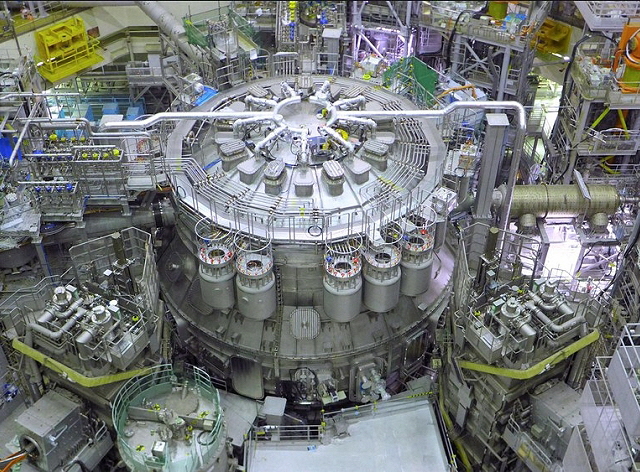
The extremely gigantic ITER construction site in Cadarache (France) shows that the EU really wants to be part of nuclear fusion research and what costs we would incur if such projects became standard. But, as we have recently learned for sure, these projects are carried out for completely different reasons. By the way, Japan is also very interested in the nuclear fusion project again. The JT-60SA nuclear fusion reactor in Japan is the largest of its kind ever built, but it too will never perform.
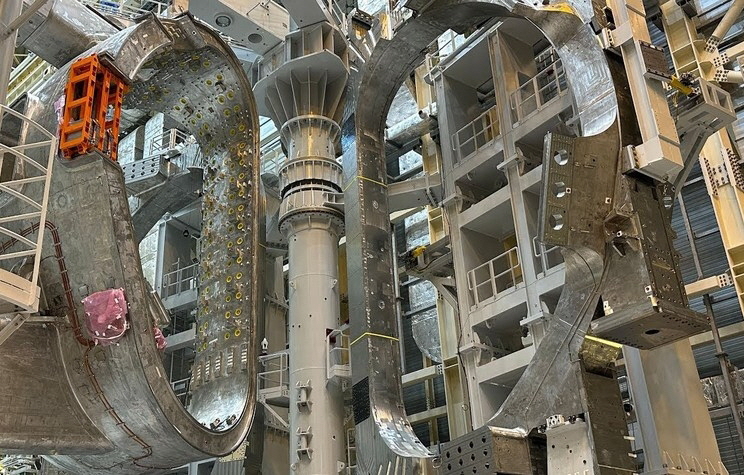
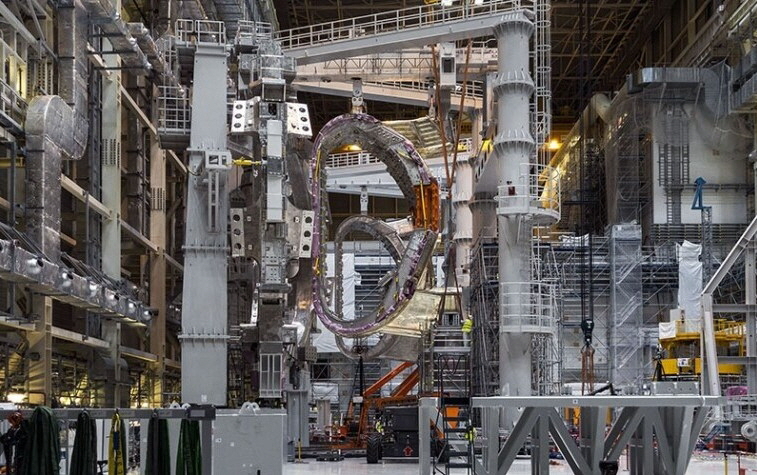
The gigantomanic monster ITER under construction shows the extreme dimensions of wasting money on systems that will never produce energy.
Addendum:
The $3.5 billion NIF 2009 is not working!
This was reported by Deutschlandfunk on February 29, 2024. The operators say the fusion project is struggling with a lot of difficulties, and the predictions based on initial tests with smaller lasers and computer simulations were too optimistic. “The system reaches the temperature of 50 million degrees necessary for ignition, and hydrogen nuclei are already fusing to form helium. But because the fuel capsules tear apart too early, they cannot ignite completely. And whether and when that will happen is not yet foreseeable. And even if it succeeds, it wouldn't be the final breakthrough for a laser-based fusion power plant. Because then you would have to investigate whether the whole thing could even be implemented into an economical technology.”
A laser-based fusion power plant is a long way off
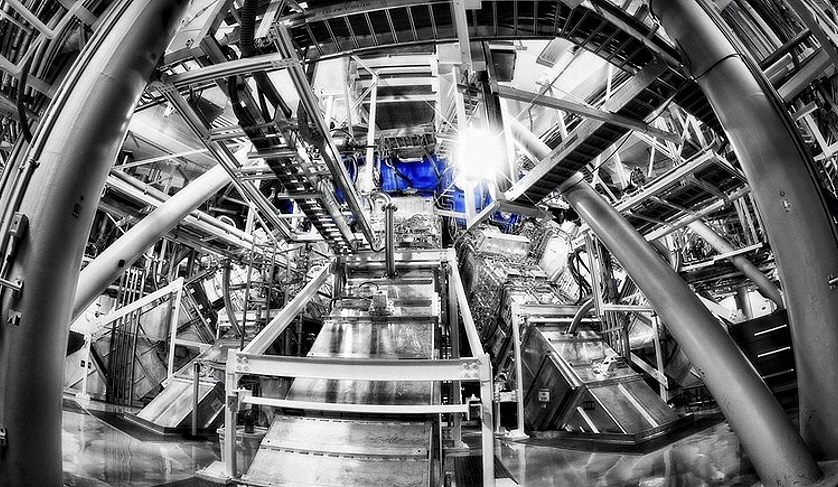
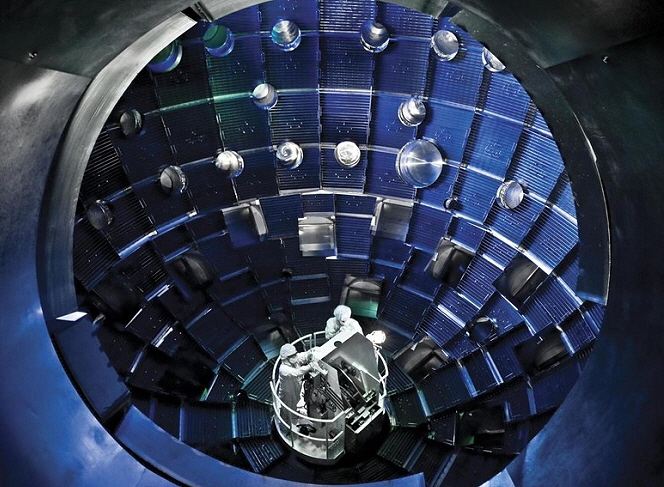
View into the target chamber of the National Ignition Facility NIF (Philip Saltonstall / Lawrence Livermore National Laboratory)
The operators are now revealing a completely new aspect:
Above all, NIF is essential for the US nuclear weapons program. Finally, it can simulate the conditions that exist when a hydrogen bomb explodes. The giant laser thus helps to keep the US arsenal functioning, without the now banned nuclear weapons tests. “We have carried out many series of tests with NIF to clarify questions about weapon physics. Due to confidentiality, I cannot go into detail. But NIF was definitely able to answer many questions.”
The military aspect was the main reason for building the $3.5 billion facility, that was clear from the start. And in this respect, NIF appears to be a complete success for its operators.
So it's not about supply at all, but rather about wipe out. Which proves once again that our government leaders are on riot brushed. Apparently people are really thinking about waging war with hydrogen bombs, since they wouldn't permanently irradiate the earth.
Children who call on other children at school to commit violence against each other in order to stake out areas because they want to make money there would rightly be said to be anti-social, disrupting school operations significantly and must therefore, for the sake of normal children, be expelled from school.
So we should think more carefully about how we want to handle things in the future.
Further topics:
Index Home Desert-Electricity World Deserts Electric Network Types of Produktion Comparison Water Network Hydrogen New Industry Green Cities Energy Transition Imprint
